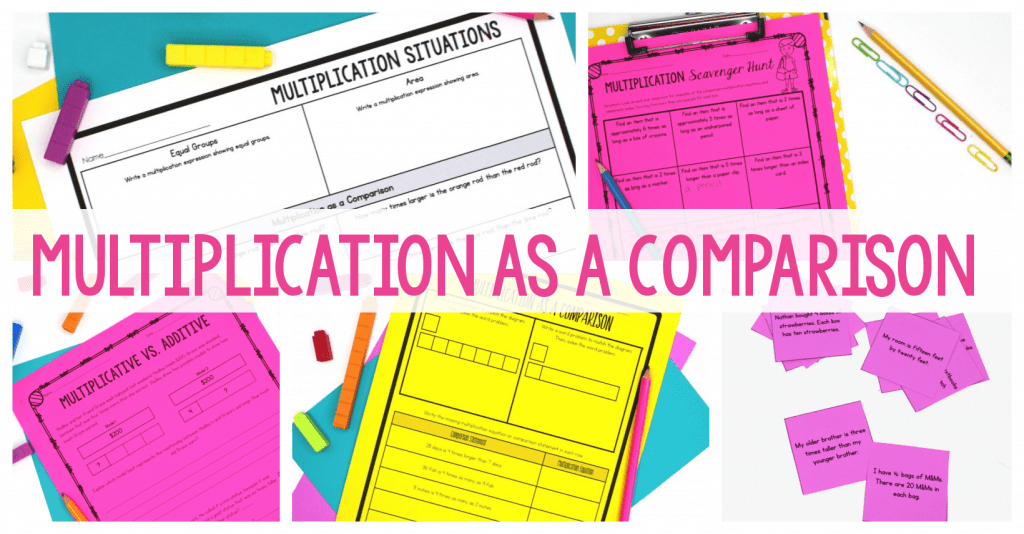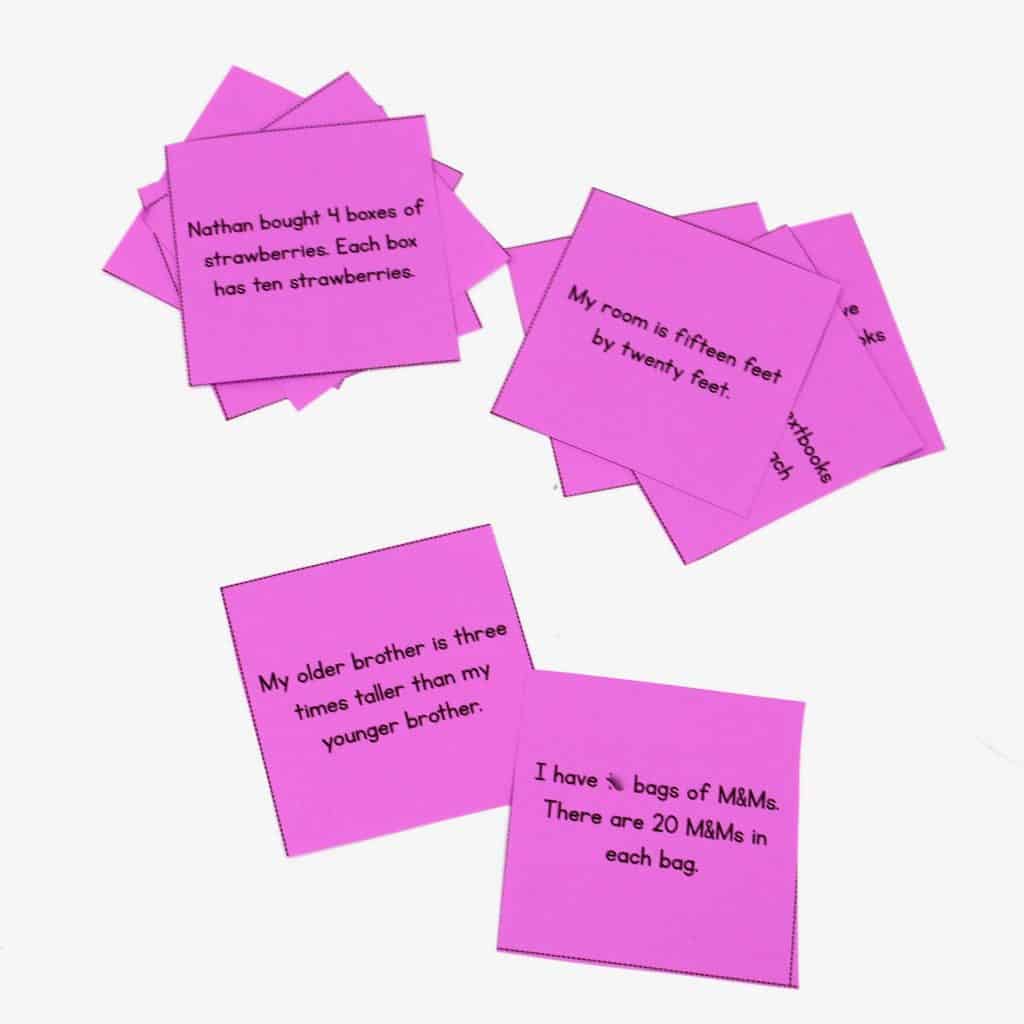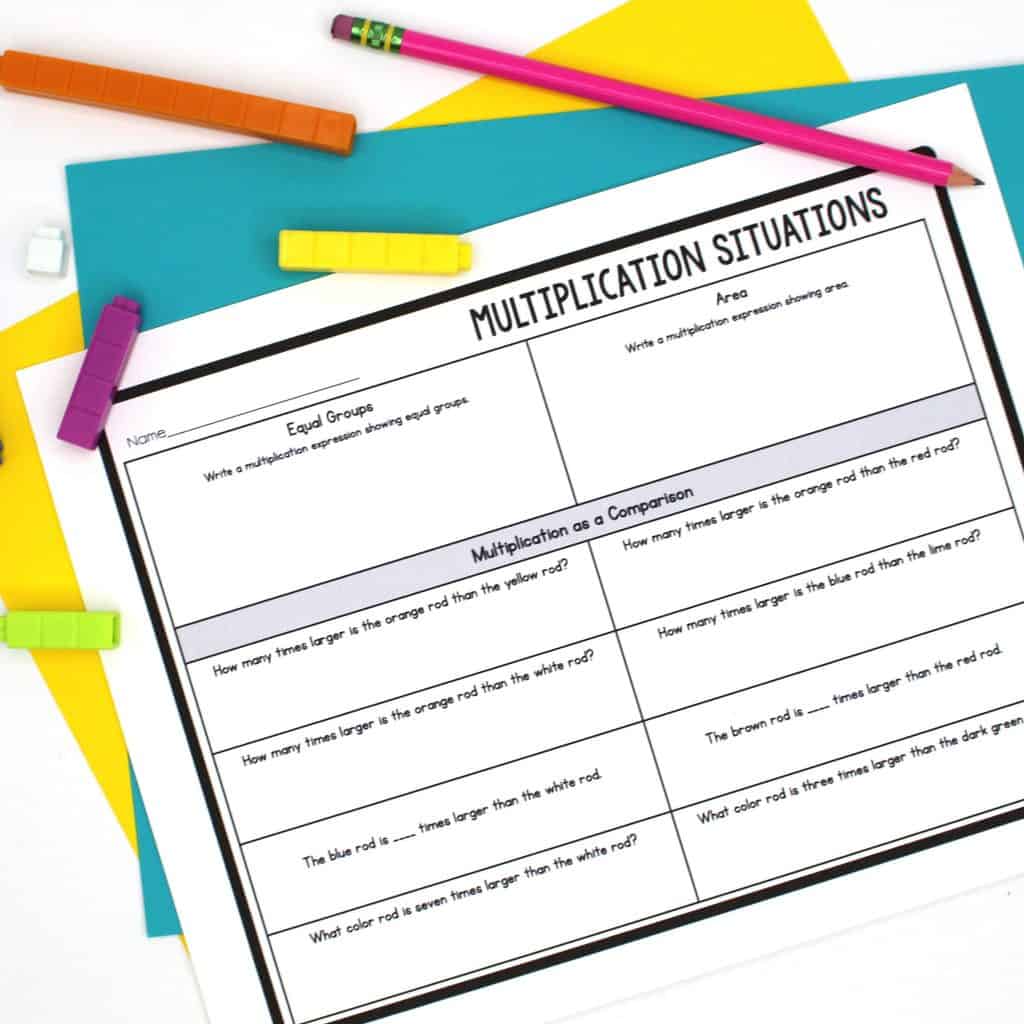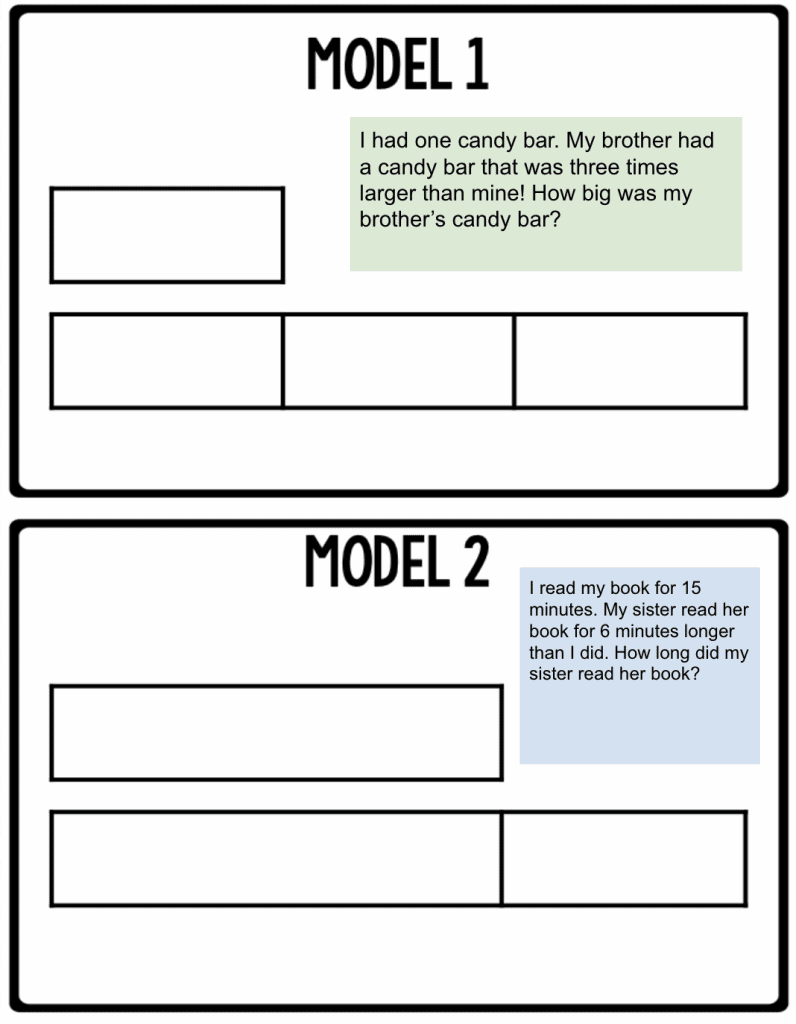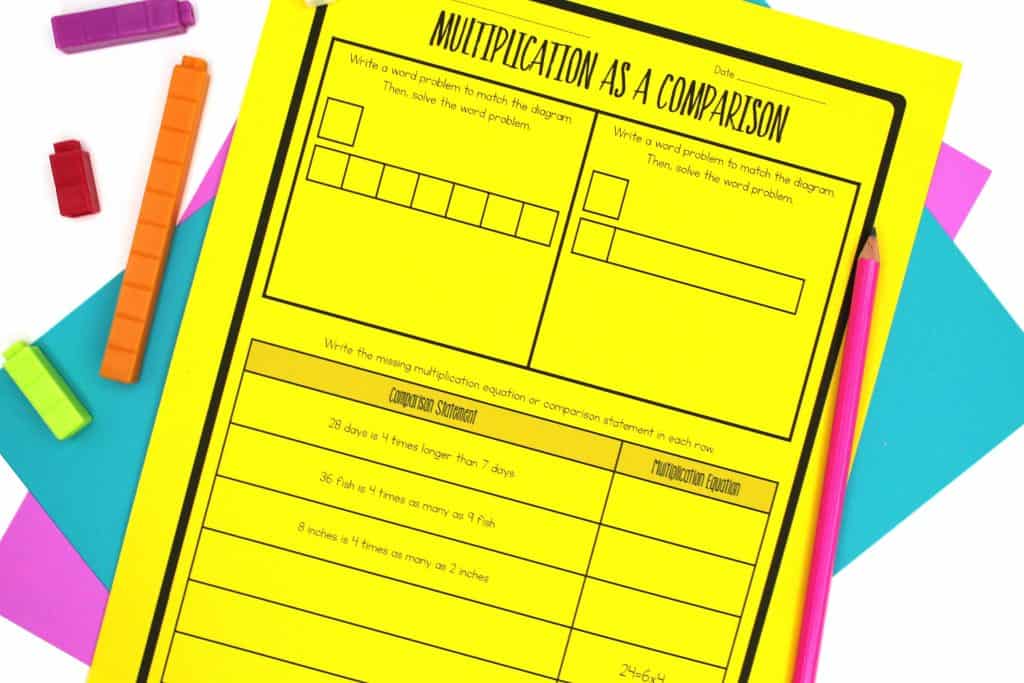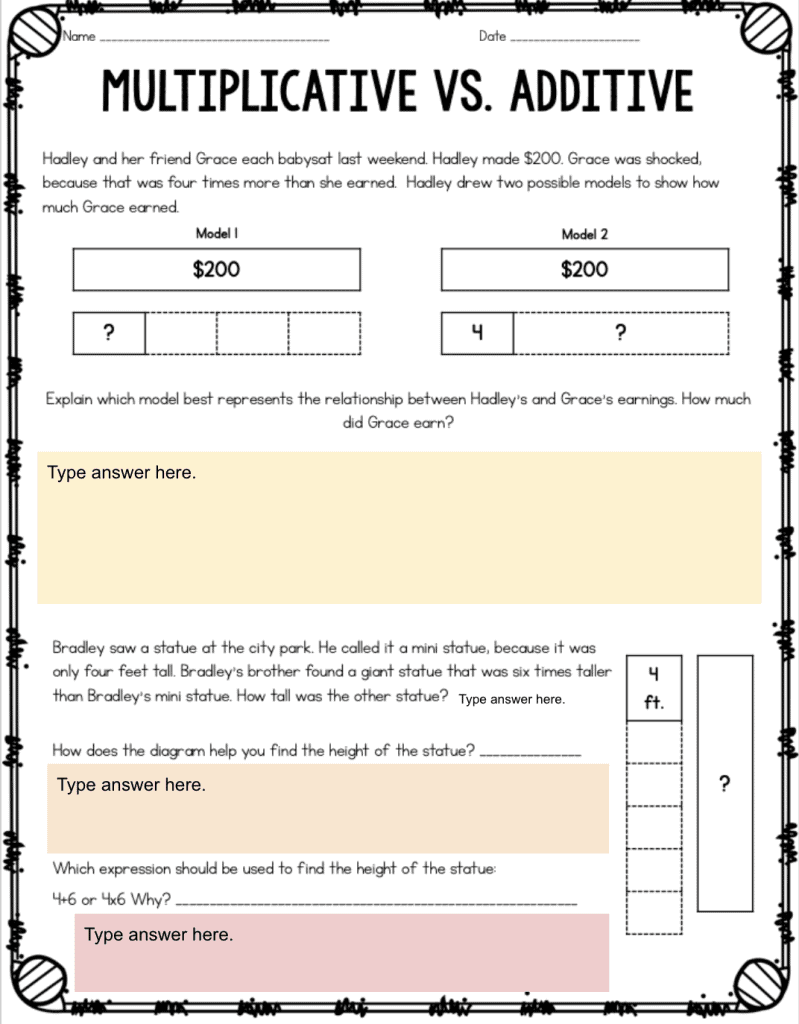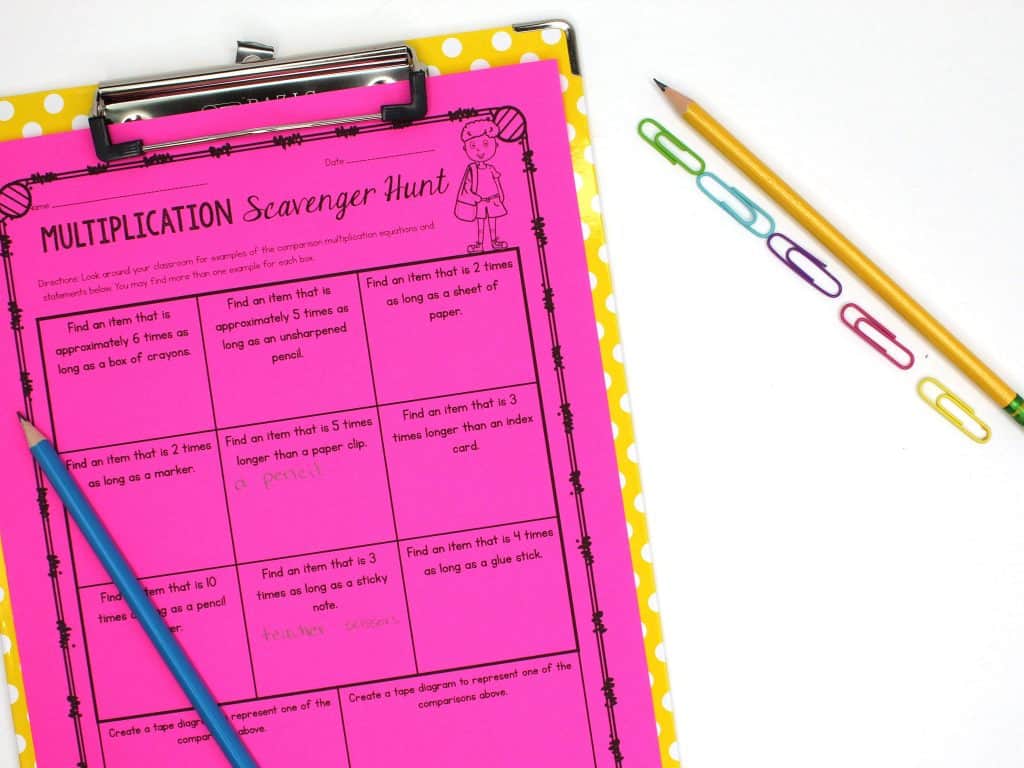Teaching multiplication as a comparison is the second portion of my multiplication unit. I begin the unit by teaching factors and multiples which you can read about here. You can certainly switch the lessons around and begin with multiplication as a comparison, though.
Multiplication Situations
In order for students to understand the significance of multiplication as a comparison, they must first understand different multiplication situations. One way to do this is through an open (and then closed) sort. Give students a collection of cards with multiplication word problems and ask students to sort the cards into three groups. After students have completed their sort, ask students to share how they decided to sort their cards.
Once students share, explain that one way to sort cards is by the different types of multiplication situations. Explain each type of multiplication situation:
- equal groups
- arrays/area
- comparison
After your explanation, have students resort their cards. Allow students to share what cards they placed with each type of situation and discuss any misconceptions.
I anticipated this being an easy task for students, but I was WAY wrong! This presented a huge challenge, which let me know exactly what I needed to focus on.
You can follow that lesson by having students write word problems to represent different multiplication situations. Students can also begin exploring multiplication as a comparison by using Cuisenaire rods (physical or virtual). For example, students will determine how many times larger the orange rod is than the red rod.
Multiplication as a Comparison – Bar Model
After giving students the opportunity to explore with the hands-on lesson above, I introduce a pictorial model of multiplication as a comparison with bar models. Students can use a tape diagram to represent addition and multiplication comparison problems. When creating models, encourage students to add labels to their models to ensure understanding. Drawing the diagram without labels can confuse students and lead to inaccurate results.
A great extension to bar models is to have students write word problems that represent the diagrams. You can display a model digitally or on a sheet of chart paper. Have students write a word problem that represents the model on a sticky note and place the sticky note on the chart. After students are finished, ask questions such as: Does this addition or multiplication?
During this lesson, I also teach students how to write a multiplication equation from a comparison statement. Students often want to switch numbers around in ways that don’t accurately represent the statement, so it’s important to focus on accurate representations.
Multiplicative as a Comparison and Additive Comparison
It’s important for students to recognize the difference between additive comparison and multiplicative as a comparison, so I often try to incorporate a problem solving lesson that allows students to apply what they’ve learned thus far. This also gives students all important practice in explaining their reasoning.
Multiplication as a Comparison – Application and Exploration
To have students put it all together, students can go on a multiplication scavenger hunt. In the scavenger hunt, students look for items that reflect given situations. For example, students may need to find an item that is two times as long as a sheet of paper. Students LOVE this lesson!
After teaching these lessons, students should continue to review all types of multiplication situations through consistent practice with word problems.

